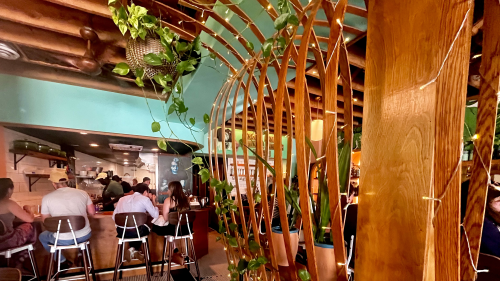Every so often a bear sleeps in a neighborhood tree right here in Madison. If you’re on the East Side, by Glacier Hill Park, you might hear the barks and yowls of coyotes. Elsewhere, a red fox might be lounging near the Biergarten at Olbrich Park.
Wild animals are cool, but, can sometimes become a nuisance, or downright dangerous if you’re not careful. Here’s a brief Madison urban wildlife field guide:
Bats
The two most common local bats are the little and big brown bats. They can be found roosting in buildings and bat houses in the summer.
Are they bad for...
- Buildings? They’ll not chew their way into your house.
- People? They’re insectivores. They won’t drain your blood.
- Pets? In rare instances, they carry rabies. Keep your pets vaccinated.
Bears
Black bears mostly reside well north of us but, occasionally, they saunter down to Madison in the spring and fall. If you see one, call the DNR at 800-433-0663.
Are they bad for...
- Buildings? They might try to destroy your bird feeders and garbage cans looking for food.
- People? They generally avoid people.
- Pets? Keep them away by making loud noises.
Coyotes
They may look frightening, but they’re generally more afraid of you than you are of them. Join the UW Urban Canid Project if you observe them.
Are they bad for...
- Buildings? Keep food opportunities out of your yard (garbage cans, bird feeders, pet food bowls, etc).
- People? Attacks on humans are exceptionally rare.
- Pets? Opportunistic hunters, they generally eat small rodents and rabbits, so keep your guinea pigs and gerbils inside.
Gulls
The gall of these gulls, wreaking havoc. There are steps one can take to ensure they don’t make a mess of things.
Are they bad for...
- Buildings? Gulls can damage HVAC systems, roofing membranes, and vehicles.
- People? Not unless you’re in some sort of Hitchcock movie.
- Pets? Your dog can chase them off. They won’t fight.
To note: Gulls are protected by law.
Opossums
Ope, whether you call them opossums or just possums, they’re generally harmless. Nature’s garbage disposal, they’ll eat crickets, beetles, mice, compost, garbage, whatever.
Are they bad for...
- Buildings? If they take residence under your porch, play a radio continuously and they should move along.
- People? They’ll hiss at you but they’ll typically run away.
- Pets? They won’t prey upon them though they do host fleas and diseases.
Raccoons
We all like Rocket from “Guardians of the Galaxy,” but raccoons can affect both human and pet health.
Are they bad for...
- Buildings? Secure access holes, broken windows, and chimneys to keep them out.
- People? They can fight when they feel threatened.
- Pets? They’ll stay away from your dogs, but keep your cats away.
Skunks
Though they control pest species and are exceedingly cute, they can stink.
Are they bad for...
- Buildings? Secure holes and other openings. Remove rock and woodpiles from your yard.
- People? Their spray is irritating but a skunk wash will help.
- Pets? Pets getting sprayed by skunks, particularly in the eyes, can have serious consequences. Contact your veterinarian immediately.
More information about nuisance wildlife can be found here.













